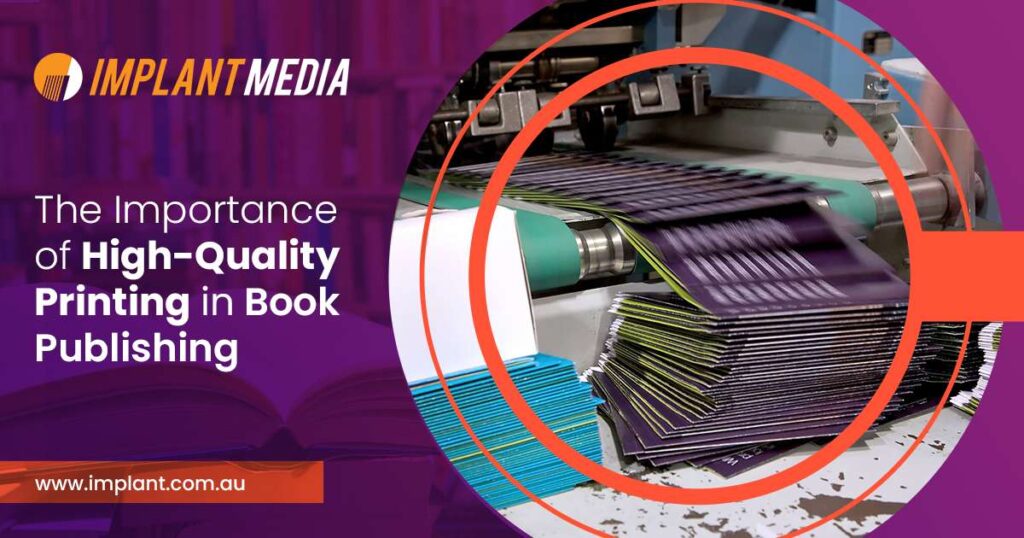Have you ever read a book eagerly, only to have its pages come out too thin, the ink smudged, or the binding disintegrating after being read a few times? It’s so irritating, isn’t it? No matter how great the content is, low-quality printing has the ability to totally ruin your reading experience.
For publishers, authors, and self-publishers, quality printing is not all about looks—it’s about credibility, reader satisfaction, and how well a book will survive in the market.
At a time when digital books are just a click away, a high-quality printed book can make an indelible connection with readers. Why does print quality become such a big deal, and how can it determine whether a book will be successful? Let’s dissect.
Why Print Quality Matters In Publishing A Book
First Impressions Matter
Let’s face it—judging a book by its cover is actually a thing. The first and foremost thing a reader sees is the physical appearance of the book. A well-printed cover with crisp images, bright colors, and a professional finish makes a book immediately more attractive.
Picture two books lying next to each other—one with vibrant, high-quality cover design and hard cover, and another with dull colors and thin pages. Which would you grab first? Right! Quality printing differentiates a book from others in bookstores, libraries, and online stores.
What You Can Do:
- Choose high-resolution images for the cover.
- Go for professional design and formatting.
- Select high-quality paper that complements the book’s theme (matte, glossy, textured etc.)
Books Are Meant to Last
Ever had a book begin to fall apart after only a few weeks? Perhaps the spine cracked, the pages curled, or the ink ran? This is due to cheap printing and materials.
Books, particularly those readers hold dear, need to last. Whether it’s a novel that circulates among friends or a guidebook that gets turned back and forth regularly, longevity counts. Low-quality printing can result in negative reviews and decreasing book sales with time.
How to Make It Last:
- Print on acid-free paper to avoid yellowing with time.
- Be sure to have solid binding (case binding for hardcovers, perfect binding for paperbacks).
- Select fade-resistant ink that won’t smudge or wear off.
A Smooth, Enjoyable Read
Did you ever find yourself unable to read a book because the print was too pale, fuzzy, or unevenly printed? It’s annoying and detracts from the pleasure of reading. Quality printing helps readers stay focused on the story or information without distraction.
Good print quality consists of:
- Clear, readable typefaces
- Even spacing and layout
- Ink that won’t smudge or run through pages
For educational textbooks, textbooks, or academic books where illustrations and graphs are centrally important, precise printing matters most. No person should have to squint through cruddy printing of graphs or work their way through obtuse directions because the ink does not adhere consistently.
Tips for a Better Reader Experience:
- Use readable fonts and the appropriate font size.
- Use consistent margins and spacing for clear readability.
- Use good ink that improves clarity and contrast.
Branding and Credibility: A Publisher’s Reputation at Stake
If a customer receives a book that is not well printed, who do they blame? The author? Publisher? Printing firm? Most times, it is the author and publisher who are blamed. Your book is a representation of your brand, and poor printing makes it look amateurish.
Self-publishing authors, especially, have to be all the more vigilant. Independent publishing being on the upswing, competition is fierce. If your book has to be considered with traditionally published books, print quality can’t be negotiated.
What Can Be Done?
- Work with reputable printing services that have a track record of high-quality production.
- Request a sample print before bulk printing.
- Consider premium printing options for limited editions or special releases.

The Psychological Impact: Why Quality Feels Good
Consider your favorite novel. Not the story itself—but the book itself. The feel of the pages, the heaviness in your hands, the smell—these are sensory experiences that add depth to the read.
A superbly printed book is luxurious. People equate good printing with value, even before they get to read the first line. It’s the difference between a book being cherished and one being tossed.
Final Thoughts: Quality Printing Is an Investment, Not an Expense
Whether you’re a new writer or an old publisher, the print quality of your books can make or break your business. Good print quality is not just about looks—it’s about satisfying readers, establishing credibility, and sustaining sales in the long term.
So, if you’re publishing a book, consider these questions:
- Is my print quality showcasing the hard work I’ve invested in writing?
- Will my book endure over time?
- Is my book providing readers with the optimal experience?
If not, perhaps it’s time to reconsider your printing options. Because in the book publishing business, quality isn’t a choice—it’s a requirement.
At Implant Media, we specialize in high-quality books printing that brings your vision to life. From crisp text to premium paper and durable binding, we ensure your book stands out in the market. Partner with us and give your readers the exceptional experience they deserve.
Ready to publish with quality? Contact us today!


